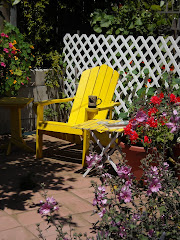The déjà vu was eerie. Winter. Cold. Night. Los Osos Junior High School. About a couple of hundred people out of a community of about 5,000 homes gathered to hear about a sewer project. One event in 1984, this one in 2010. Same people, same issue. Makes me tired even thinking about it.
Well, this workshop was the final piece in the Hideous Los Osos Sewer Project; the ordinance setting rates and charges. If the “protest” vote is not successful (with 50% plus one required, damned near impossible to accomplish), developed property owners will be paying to cover the capital costs of their neighbor’s undeveloped property, plus an additional fee based on their own (indoor) water usage. If and when water issues are resolved, and undeveloped property owners are allowed to develop, they will then pay the entire original assessment and R&C fees, and the total R&C will drop slightly on developed property (at least the fixed capital cost portion will.) If there is no water and undeveloped property can’t develop, the developed property owners will pay the full freight for the whole deal.
It was anticipated that a critical water report and other info coming in the spring may give a better picture as to water availability and if it looks like a sure thing, the County will hold an assessment vote for the undeveloped land-owners and if successful, the fixed portion of the R&C will drop accordingly.
The water portion of the R&C will be based on your Jan/Feb water bills. The presumption will be that that’s “indoor” water use. It will be figured on your Jan/Feb numbers, annualized, times $7.54 per unit. Check your water bill last year to see how many units you used in Jan/Feb to get a guestimate on what your individual cost will be. (The formula from the CSD hand-out is “usage found on your water bill x 745 gallons divided by 60 will give you average daily use”) A unit is 748 gallons) In addition, the CSD office has all kinds of great water info available to help you figure this out and how to conserve water as well. And the county website will also have info needed to calculate estimates.
It’s important to do this early-on because right now people may have the county’s glossy brochure figure of $194 total for their sewer bill floating around in their head, which is misleading. Onto that you’ll have to tack your own water usage from the R&Cs, which may come as a huge sticker shock to many people. And, of course, you still have your regular water bill on top of all that. I suspect that a $300-a-month water/sewer bill will not be at all uncommon. Oh, I almost forgot, a $300-a-month plus costs for hook up, if you financed that. So, will a $350++ a month water/sewer/hook up bill become the new norm?
It’s not known yet whether the R&C will come as a monthly bill or be added to the tax rolls. Landlords will be getting the bill so they’ll have to figure out a fair charge for their tenants.
The original $25,000 per home assessment will appear on the 2010/11 tax bills. The R&C won’t appear until the 2014 hook-up.
On lot costs will involve decommissioned septic tanks, pipe run to lateral and is the sole responsibility of the homeowner. Guestimated costs run between $2,000 to $5,000. The county is looking for grants to help with low-income folks to help pay for hook-up costs and the county is also looking into the possibility of waiving or reducing the various permits needed to decommission tanks (inspection fees & etc.), and I presume the County will have a list of recommended companies certified to do that kind of work so people can avoid shoddy fly-by-nighters who could leave them with an expensive mess.
The county is also working on making information available for homeowners who want to use their abandoned septics as a rain-water cistern system or as a cachement system to keep rainwater on their property for percolation into the ground. And for people who are using extensive greywater, they’ll have to consult with the county if they want to get a more accurate rate on their indoor water use, since that fee is based on the amount of used water that’s actually going down into the sewer pipes, which greywater isn’t.
And the county’s looking into financial help for poor folks who have no way of paying those high on-lot costs. It’s not known at this time if or how much help is or will be available, but some of the grants are only available to counties while others individual homeowners must apply for themselves. With the state broke, even more of this community fallen into PoorVille, this community needs to brace for more people losing their homes on account of this project. And brace for a shrug of indifference from various government agencies. Not their problem.
A few Questions from the audience:
Will cost overruns on the project be added to the R&C? No, legally can’t be added to either the base assessment or the R&C. The county’s not anticipating cost over runs, the bids that have been coming in on other projects are running 30% under the usual costs due to the lack of work and very hungry contractors and the cost guestimates were pegged in the mid-range so there’s some wiggle room before going over. And if costs end up going under the guestimates, the amount collected will also go down.
Supervisor Gibson said he intended to ask the RWQCB to remove the CDOs from The Los Osos 45. Yeah, well, good luck with that one.
Several people asked about holding a special tax for residents in the Los Osos Basin, a tax that would ensure that people living outside the PZ would be taxed and said tax would broaden the tax base for the sewer and would go to help pay for the sewer since folks living outside the PZ are benefiting from the clean water created by the treatment plant, but aren’t paying to clean it. That’s something Paavo Ogren said they were looking into and when the water reports are in, the county may take a look at doing that. If a majority (50%) of homeowners inside the PZ voted for such a “use” tax on their neighbors outside the PZ, it would pass.
Another question involved using old census data to determine median household income, for example. That data is certainly out of date and would have an impact on whether grants are available. If the old data showed us to be a wealthy community and that’s no longer the case, then that data must be updated. In addition, the grant monies and lower interest loans available via the SRF program depend on those numbers, as do Federal guidelines as to affordability. And, clearly, if this project wasn’t “affordable” under 2000 census data, it sure isn’t “affordable” now. Sometime in the spring, that data may be available, as will information from the SRF funds. So, that may result in better terms and hence lower costs. Or maybe not. One thing is sure, the really interesting numbers may start showing up with the new census data. Way back in 2000, the original CSD members were using numbers that guestimated that 33% of the community would be forced out of town by the (then) proposed sewer costs. Is that percentage still right or will it be higher or lower? The 2010 numbers may tell a tale.
The workshop was taped by AGP Video and so will be shown on local cable.
The Board of Supervisors meets Dec 14th to certify the “protest vote.”



















